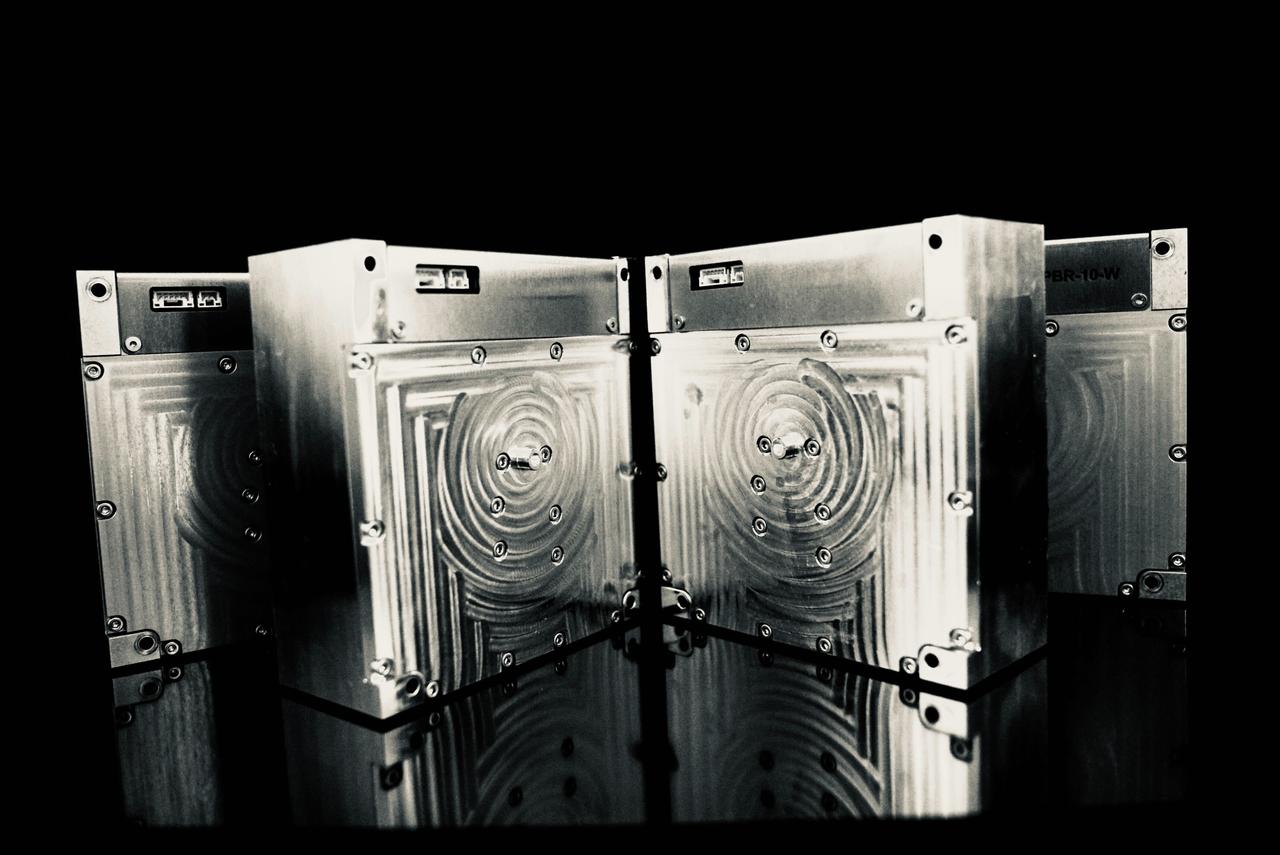Pale Blue representative Jun Asakawa and a model of Sony’s artificial satellite equipped with Pale Blue’s engine.
On March 14th, Elon Musk’s SpaceX successfully reached outer space with the third launch of its large rocket Starship. The day before, the first private rocket, Kairos, was launched in Japan. Although Kairos ended up exploding shortly after launch, events continue to make us feel that the movement of companies involved in space exploration in Japan and abroad is accelerating.
Around the world, an increasing number of private companies are launching artificial satellites and using them for their own services. According to a Cabinet Office survey, the number has increased approximately 11 times over the past 10 years. In 2022, a record 2,368 aircraft will be launched. In fact, a Japanese space venture is attracting attention.
Pale Blue, a venture from the University of Tokyo, is also known for having an engine developed in-house used in Sony’s microsatellite “EYE,” which was launched in January 2023.
Pale Blue focuses on water as a fuel for the engines used by satellites to change their orbits and control their attitudes in space. It has also been adopted by the New Energy and Industrial Technology Development Organization (NEDO) and the Ministry of Education, Culture, Sports, Science and Technology’s Startup Support Project (SBIR).”Water Engine”We are working towards mass production of.
We asked Jun Asakawa, CEO of Pale Blue, who has experience as an engine development engineer, about the company’s founding history and why water engines are in demand around the world.
*For information on the interview, click here.YouTubeand variousPodcast serviceYou can view it from here.
“Propulsion machines used in society” Started a business immediately after obtaining a doctorate
“There is a photo called “Pale Blue Dot” taken by NASA’s Voyager 1 (probe) from a location approximately 6 billion kilometers away from Earth.The Earth appeared as a pale blue “dot” in pitch blackness. We chose the name Pale Blue to reflect our desire to industrialize the field of space.” (Mr. Asakawa)
Mr. Asakawa explains the origin of the company name Pale Blue. Pale Blue is a startup that started in 2020 with technology from the laboratory of Associate Professor Hiroyuki Koizumi, who has been researching satellite engines at the University of Tokyo. Mr. Asakawa also came from this laboratory, and after completing his doctoral course in 2019, he chose to start his own business together with Associate Professor Koizumi and several other members of his laboratory at the time.

The NASA image “Pale Blue Dot” is the origin of Pale Blue’s company name. The “pale dot” visible slightly above the center of the screen is the Earth.
There is a reason why I chose to become an entrepreneur instead of pursuing a career as a researcher.
Even though it is called “research on satellite propulsion devices (engines)”, basic research is the main focus in university laboratories. Most of the work involves investigating the physical properties of fuel and materials used in the aircraft body through inspection and simulation, and it is difficult to make an engine. On the other hand, when it comes to practical use, the ultimate goal is to create a flying engine, so the perspective is completely different.
“I think that Professor Koizumi, who was my supervisor, really felt the importance of this (difference).He told me that I needed to experience not only basic research but also the production of propulsion machines that would actually be used. He led the project (to build an engine) and invited students to participate.”
As a member of the laboratory, Mr. Asakawa developed the engine for Procyon, an ultra-compact deep space probe developed by the University of Tokyo and JAXA, which was launched together with the asteroid probe Hayabusa2 in 2014. Experienced in projects including operation.
As a researcher, he finds it interesting to delve into propulsion systems, but through experience in both basic research and its application (practical use), he has realized the difficulty of supplying “propulsion systems for use” to society.
In addition, I had the opportunity to learn the know-how of starting a business at the University of Tokyo Entrepreneur Dojo, which I attended while I was a student.
“Like Professor Koizumi (with JAXA, etc.)Even if we do a project, the number is limited. Even if you go to a company that currently exists, it would be difficult to implement propulsion machines in society.Then I have to do it myselfIt just so happened that my classmates, juniors, and professors in my lab also had similar problems.”
As I was starting to feel better about myself, an investor I met at a business contest asked me if I would like to apply for government funding to capitalize on the university’s research seeds. I tried the challenge and was successfully selected.
“I was gutted.”
Advertisement
Flying a satellite with water like a plastic bottle rocket

A satellite’s engine basically obtains propulsion in the same way as a plastic bottle rocket. There are various possible substances to be released, including hydrazine, xenon, and water, each of which has advantages and disadvantages.
Substances such as hydrazine and xenon are commonly used as fuel for satellite engines. By turning these substances into gases or ions and injecting them, the system uses the reaction to generate propulsion. Pale Blue uses “water” as this fuel. It emits water vapor and particles that turn water into plasma. This is the essence of what is called a “plastic bottle rocket.”
Regarding the reason for using water, Mr. Asakawa said, “Propellants require three elements: safety, availability, and cost.Water satisfies all three of these requirements.” he says.
In fact, existing fuels such as hydrazine and xenon cannot be said to meet all three requirements.
For example, although hydrazine has a high propulsion force and is often used in large satellites,Highly toxic and difficult to handle.Xenon is used as a highly efficient engine fuel, but only trace amounts exist in the air, and production is dependent on Russia and Ukraine. Due to the recent situation, availability has deteriorated.
On the other hand, looking around the world, the number of private companies attempting to enter the space business has increased in recent years. Asakawa points out that there is a worldwide need for propulsion machines that can be used “cheaply and easily” for small artificial satellites.
Therefore, Pale Blue is proceeding with the development of a unique engine based on “technology to evaporate water at low temperatures” and “technology to turn water into plasma,” which Associate Professor Koizumi of the University of Tokyo has been researching and developing for many years.
Steady progress toward mass production of “water engines”

Pale Blue is developing engines that eject water vapor and engines that eject (water) plasma.
In particular, the type of engine that spouts water vapor will be installed on the microsatellite “EYE” developed by Sony and launched in January 2023. It has actually been tested in space. Development of a type of engine that ejects plasma (ion engine) has also been completed. Although it was mounted on a satellite and launched, the launch itself failed and there is no track record of operation in outer space.
Pale Blue’s policy is to build up a proven track record of each engine in space, and to seek out companies and research institutes that would like to utilize it as a propulsion device.

Water engine developed by Pale Blue.
The company is already communicating both domestically and internationally, and Asakawa says, “The company I often talk to is a company that is trying to build a satellite constellation*.”
(*Satellite constellation: A system that provides services by launching a large number of small satellites, ranging from several dozen to several thousand. Known examples include the satellite service Starlink provided by SpaceX.)
“When launching a large number of satellites, a certain amount of propulsion equipment and propellant are required.At that time, if the propulsion equipment that uses xenon, such as those on the market today, is difficult to procure. When you think about it as an industrial product, I think it’s important to balance quality, cost, and delivery time.I think it’s easier to make a water engine in that respect.”
Although water engines have the potential to be cheap and easy to use, they are still inferior to existing engines using hydrazine or xenon in terms of propulsion and efficiency. Research and development will also continue to be necessary.
Pale Blue has received support from the Ministry of Education, Culture, Sports, Science and Technology’s innovation support program SBIR and grants from the New Energy and Industrial Technology Development Organization (NEDO) to establish mass production technology and further develop the technology.
In January 2024, we announced the launch of a production technology development base in Tsukuba City, Ibaraki Prefecture, with Tokyo Keiki, which has a track record of manufacturing and developing space equipment, with which we have formed a partnership with the aim of mass production.
“While the need for propulsion equipment is increasing, the supply is not keeping up. Pale Blue cannot meet the world’s demand alone, so instead of competing with competitors for the market, we will work together to meet the needs of the market and expand. I think we are in a phase where we can move forward. We would like to secure production capacity as soon as possible.” (Mr. Asakawa)
*This article is based on Business Insider Japan’s video podcast program “DeepTech InstituteThis is a partially edited version of the content of “.If you would like to watch the full story, please download it from various podcast services.YouTubeplease use.
Source: BusinessInsider
Emma Warren is a well-known author and market analyst who writes for 24 news breaker. She is an expert in her field and her articles provide readers with insightful and informative analysis on the latest market trends and developments. With a keen understanding of the economy and a talent for explaining complex issues in an easy-to-understand manner, Emma’s writing is a must-read for anyone interested in staying up-to-date on the latest market news.
